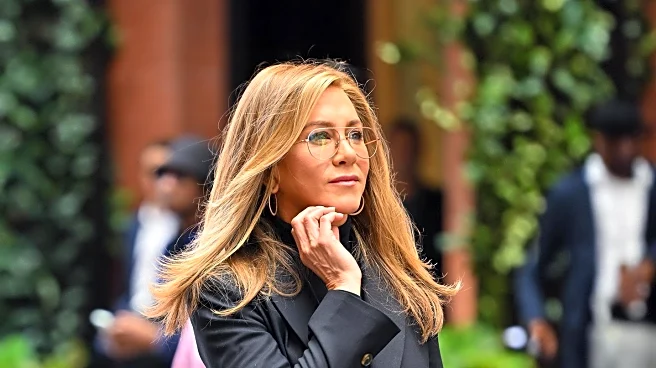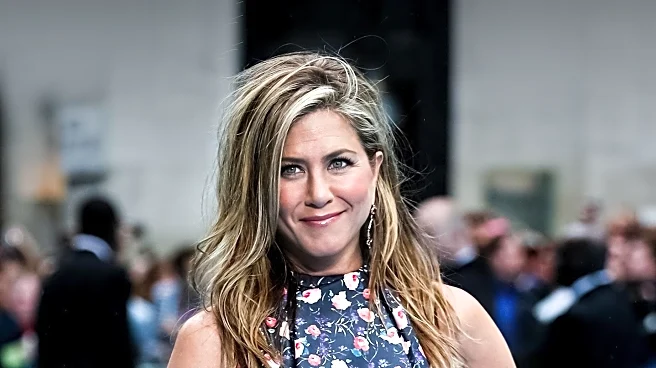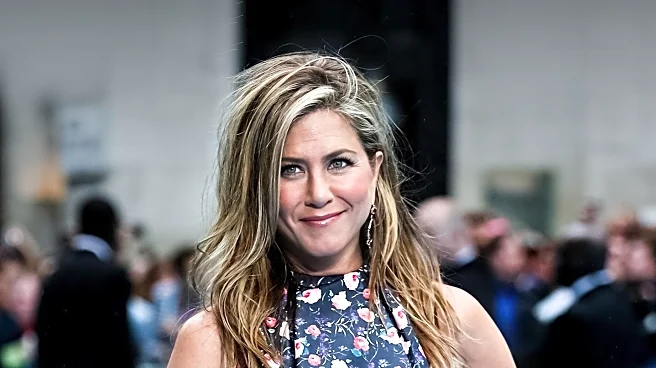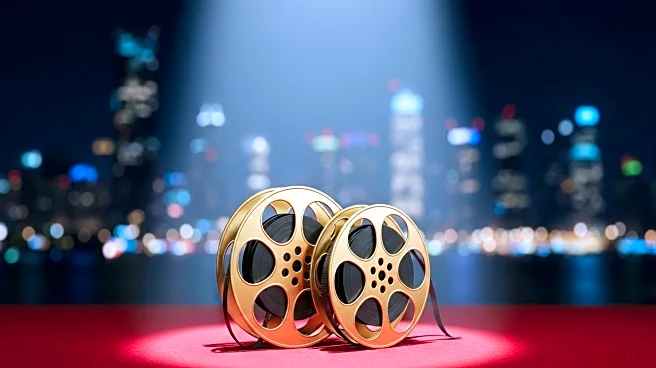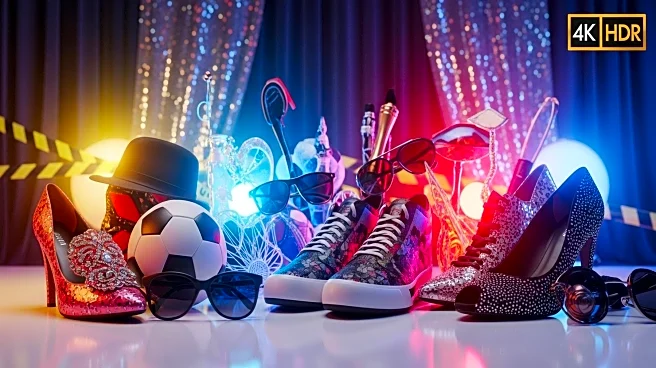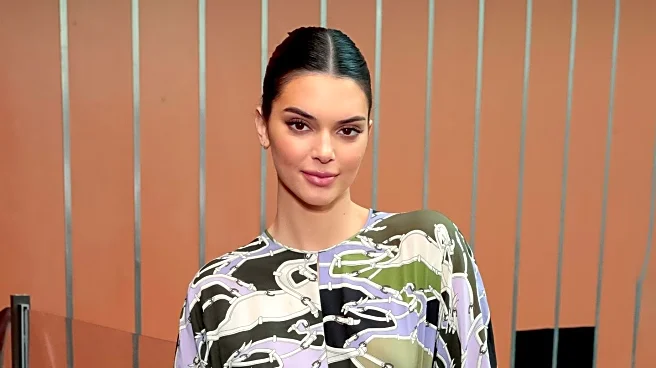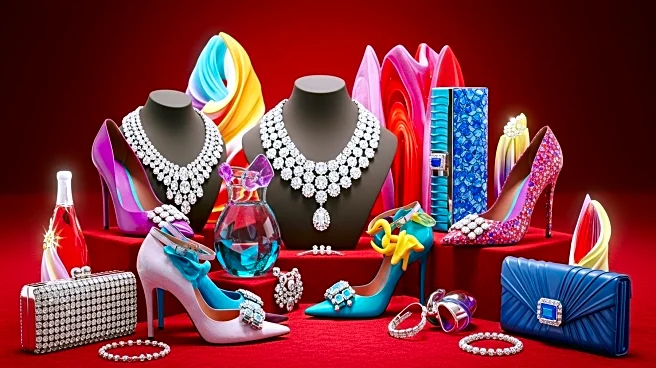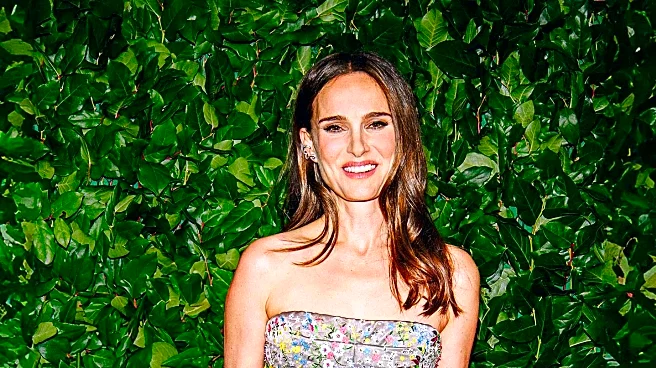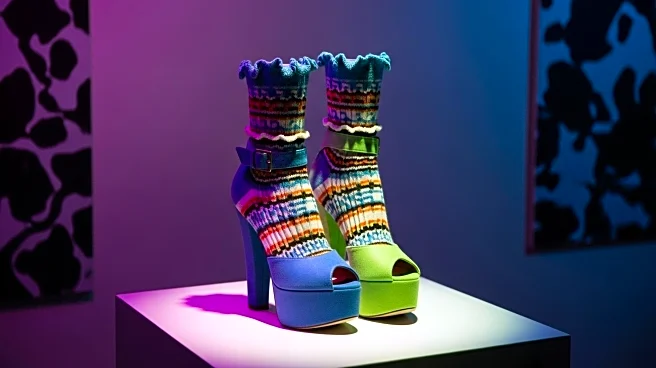What's Happening?
Jennifer Aniston made a notable appearance at the New York premiere of the latest season of The Morning Show, wearing a strapless black Rick Owens dress. This choice of attire harkens back to her iconic style from the late 1990s and early 2000s, a period when Aniston became a fashion icon through her role in Friends. The dress, reminiscent of her past red carpet looks, highlights Aniston's enduring influence on fashion, as she continues to inspire modern celebrities like Bella Hadid and Hailey Bieber. Aniston's style remains consistent, favoring sleek, shapely silhouettes that have become her signature over the years.
Why It's Important?
Jennifer Aniston's fashion choices continue to resonate with audiences and influence contemporary style trends. Her ability to seamlessly blend past and present fashion highlights the cyclical nature of trends and the lasting impact of iconic figures in the industry. Aniston's style serves as a touchstone for both nostalgic fans and new generations, reinforcing her status as a timeless fashion icon. This event underscores the importance of celebrity influence in the fashion world, where past styles are often revived and reimagined, shaping current trends and consumer preferences.
What's Next?
As The Morning Show continues to garner attention, Aniston's fashion choices will likely remain a focal point for media and fans alike. Her influence may inspire designers to revisit and reinterpret styles from the late 1990s and early 2000s, potentially leading to a resurgence of trends from that era. Fashion enthusiasts and industry professionals will be watching closely to see how Aniston's style evolves and impacts future collections and red carpet events.
Beyond the Headlines
Aniston's fashion choices also reflect broader cultural trends, where nostalgia plays a significant role in shaping consumer behavior. The revival of past styles can be seen as a response to current societal dynamics, where individuals seek comfort and familiarity in uncertain times. This phenomenon highlights the intersection of fashion, culture, and psychology, offering insights into how historical styles can provide a sense of continuity and identity.
